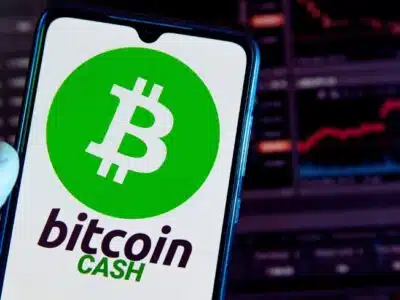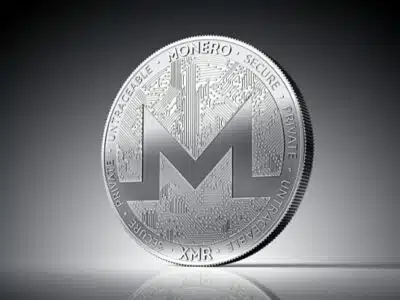XRP, developed by Ripple Labs, is a digital currency and open-source blockchain protocol designed for efficient international money transfers. Unlike typical cryptocurrencies, XRP focuses on optimizing cross-border transactions for financial institutions. Prioritizing speed and efficiency, XRP aims to revolutionize global payments by providing secure, decentralized transactions with near-instant processing and low costs.
XRP’s Technical Features
- Consensus Mechanism: XRP employs the Ripple Protocol Consensus Algorithm (RPCA), a unique approach distinct from traditional PoW or PoS mechanisms. Without miners or validators competing, RPCA relies on a predefined set of nodes (validators) reaching consensus on transaction order and validity. This process ensures faster confirmations and a more energy-efficient network than PoW-based cryptocurrencies.
- Scalability: XRP is designed to handle a high throughput of transactions. The network can process approximately 1,500 transactions per second, making it one of the most scalable blockchain solutions.
- Cost-Effectiveness: The cost of transactions on the XRP Ledger is minimal, contributing to its appeal for financial institutions and businesses seeking to optimize cross-border payment processes. As per the network, 0.00002 XRP is the minimum transaction fee for a regular deal.
- Transaction Speed: XRP is renowned for its swift transaction confirmation times. The average settlement time for an XRP transaction is around 3–5 seconds.
- Pre-mined Tokens: All XRP tokens were created at the network’s inception, and a fixed supply of 100 billion XRP was pre-mined. This eliminates the need for mining rewards and ensures a stable token supply.
Liquidity and Market Position
- Market Access and Adoption: High liquidity attracts more market participants, fostering increased adoption. Exchanges and financial platforms are more likely to list XRP due to its liquidity, which provides users with easier access to the digital asset.
- Efficient Transactions: XRP’s liquidity ensures that there is a robust market for buying and selling, facilitating seamless transactions. This is crucial for users, especially financial institutions, looking to execute large trades without causing significant price fluctuations.
- Global Utility: Increased liquidity often correlates with broader global utility. XRP’s liquidity is beneficial for its intended use case in cross-border payments, as it ensures that sufficient volume exists to support the conversion of fiat currencies to XRP and vice versa.
- Price Stability: Liquidity helps maintain price stability by reducing the impact of large buy or sell orders on the market. This stability is attractive to investors and institutions seeking a predictable environment for transactions and portfolio management.
- Competitive Advantage: XRP’s high liquidity provides a competitive edge over less liquid cryptocurrencies. This factor makes XRP more attractive for institutional investors and businesses.
Comparison with other top cryptocurrencies in terms of market capitalization and trading volume
| Cryptocurrencies | Market Cap | Trading Volume |
| Bitcoin(BTC) | $708.7 billion | 30.33B |
| Ethereum(ETH) | $246.2 billion | 15.16B |
| Tether(USDT) | $87.1 billion | 56.19B |
| Binance Coin(BNB) | $37.2 billion | 945.48M |
| XRP | $35.2 billion | 1.75B |
| U.S. Dollar Coin (USDC) | $24.0 billion | 7.06B |
| Dogecoin | $10.5 billion | 1.24B |
Potential Applications in Casinos
XRP’s rapid transaction speed and low fees make it an ideal payment solution for online casinos, allowing instant deposits, swift withdrawals, and cost-effective in-game transactions. Its borderless nature enhances global accessibility, providing players a seamless and efficient gaming experience. XRP’s global nature offers significant advantages for international players in online casinos. By eliminating currency conversion fees and delays, XRP enables seamless cross-border transactions, allowing players from different regions to participate effortlessly. Ripple’s smart contract capabilities contribute to transparency and fairness in gambling operations, addressing concerns related to fraud or manipulation. When integrated into the best Ripple casinos, these features ensure a secure environment.
Market Performance and Future Outlook
The price of XRP was $0.006 at the beginning of 2017. Its price increased by 10,826% to $0.66 as of Nov. 14, 2023. XRP has experienced notable historical market performance, often responding to broader market trends. Compared to major cryptocurrencies like Bitcoin and Ethereum, XRP’s price movements have sometimes shown correlation but also unique responses due to its distinct use case and focus on cross-border transactions.
The future trajectory of XRP hinges on ongoing market dynamics and technological advancements. Regulatory clarity and broader institutional adoption could bolster its position, especially in facilitating cross-border transactions. Technological upgrades and scalability improvements may further enhance its utility.
Conclusion
Ripple’s XRP distinguishes itself in the crypto space with features like the Ripple Protocol Consensus Algorithm, scalability, rapid transaction speed, and cost-effectiveness. XRP, centered on facilitating cross-border transactions and boasting high liquidity, competes effectively. Its ongoing adaptation to market changes, regulations, and technological progress underscores its significance in the evolving cryptocurrency landscape.









